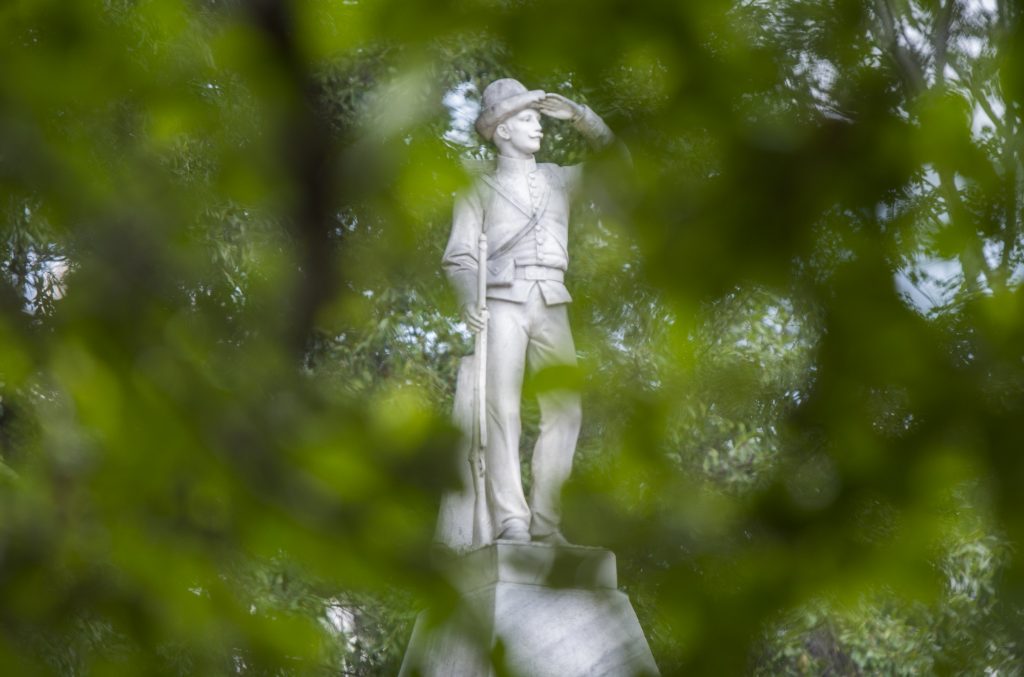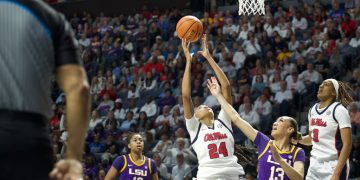The University of North Carolina at Chapel Hill received approval over Labor Day weekend to relocate the recently toppled “Silent Sam” statue to a “safe, legal and alternative location,” according to a statement from Chancellor Carol Folt.
Folt shared a letter last Friday explaining that the UNC System Board of Governors has granted her and the UNC-Chapel Hill Board of Trustees permission, for the first time in UNC history, to move the controversial statue. Folt will present the plan for relocating “Silent Sam” by Nov. 15.

Last year, the University of Mississippi gained similar permission from the state attorney general to relocate a statue of a Confederate soldier after the statue’s base and contextualization plaque were struck by a drunk driver. The statue, dedicated in 1906 by the United Daughters of the Confederacy, currently stands in the Circle on Ole Miss’ campus.
After the collision, some students hoped the university would remove the statue. Instead, the base of the statue was repaired for more than $10,000 and a new plaque was installed.
On Aug. 20, protesters from around North Carolina and the UNC community gathered in protest of “Silent Sam,” a monument of a Confederate soldier on the UNC-Chapel Hill campus. During the event, the statue was toppled by several among the crowd.
The Chapel Hill protest was the latest viral event surrounding the discussion about Confederate memorials in public spaces and comes during a time when many cities and universities across the country are removing similar monuments.
James M. Thomas, assistant professor of sociology, said the statue has no place on the Ole Miss campus. He said that “not all things done by humans deserve preservation.”
“The Confederacy and the principles upon which it stood — slavery and human indecency — deserve nothing but our strongest rebuke,” Thomas said. “When people become tired of being in service to white supremacy for the sake of the statue here, I would expect something similar to occur — with or without a plaque.”
Last spring, the university contextualized the monument as well as many other sites across the campus.
The wording on the new plaque for the Confederate soldier monument is also different than the one erected in 2016.
“Although the monument was created to honor the sacrifice of local Confederate soldiers, it must also remind us that the defeat of the Confederacy actually meant freedom for millions of people,” the new plaque reads.
The University of North Carolina was also given permission to give contextualization to its statue, but the administration chose not to relocate the statue. Students actively protested for over a year before demonstrators toppled the statue just two weeks ago.
Associate professor of history John Neff, director of The Center for Civil War Research, helped during the process of contextualization for the Circle’s statue. According to Neff, contextualization is the process of explaining the past and relating it to the present. He said that though entering into dialogue and clarifying history in this manner is important, it doesn’t solve the problem.
“Contextualization is not a solution as much as it’s an effort for the university to face its past with honesty and clarity,” Neff said. “The extent to which that changes people’s minds or makes them less or more comfortable — that’s beyond the scope of contextualization.”
Neff said he understands the frustration and impatience that many students have, but he does not advocate vandalism.
“Contextualization isn’t about making protest groups less angry or trying to change people’s minds,” Neff said. “This is another step where we try to wrestle with a long and very complicated history while, at the same time, respecting and understanding the needs of the currently very diverse campus.”
Despite the updated contextualization of the monument, the statue has drawn harsh criticism from the student population as well as from over 100 staff members, graduate students and alumni of the Ole Miss Department of English in the past year.
Ole Miss special education major Casey Webb said that though the current status of the monument may not be the best, it is still an important part of the university’s history.
“I think that there is historical value to it, but times also change,” Webb said. “If you tear it down just for the sake of acting like it never happened, then it will never help anyone. If you try to preserve it and its history with context, then it helps us to remember it and learn from it.”
However, others believe that the monument should be moved to a different location to be appreciated for its history.
Biochemistry major Hannah Carson said that in part because of her background as a woman of color, she disagrees with the original purpose of the statue, but she agrees that it is nonetheless imperative that the university move forward and learn from the past.
“Moving it to a museum would probably be best. Obviously, although I would never agree with anything related to racism, it should be preserved,” Carson said. “In a museum, we can at least learn about everything that happened, because there are always two sides to one story.”



























